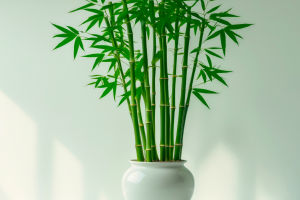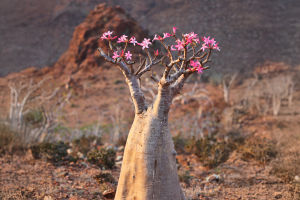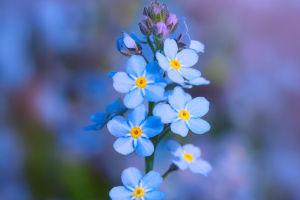Bamboo captures the interest of many for its unique combination of speed, strength, and versatility.
Lykkers can discover how this remarkable plant serves many purposes — from practical uses in construction and crafts to contributing positively to the environment.
This article explores the main types of bamboo, their features, and their applications in a clear, friendly way.
Understanding Bamboo Plants and Their Roles
What is Bamboo?
Bamboo is a perennial plant that belongs to the grass family. Unlike typical grasses, bamboo grows into giant canes called culms, which can reach impressive heights. Its rapid growth and strong yet flexible nature make it highly valuable.
Where Does Bamboo Grow?
While native primarily to tropical and subtropical parts of Asia, bamboo also thrives in various regions around the globe, including South America, Africa, and other parts of the world. The plant's adaptability to different climates has helped it spread far beyond its original habitats.
Practical and Ecological Importance
Bamboo is widely used in construction, crafting furniture, musical instruments, paper production, and even textiles. Beyond practical uses, it plays a vital ecological role by preventing soil erosion, capturing carbon dioxide, and providing shelter for wildlife. Its quick growth makes bamboo a renewable resource, supporting sustainability efforts.
Main Varieties of Bamboo
Giant Bamboo
Known scientifically as Dendrocalamus giganteus, giant bamboo ranks among the tallest bamboo species. Native to tropical parts of Southeast Asia, it can grow up to 30 meters tall with thick, hollow stems about 25 centimeters in diameter.
This variety is appreciated for both decorative and functional purposes. Its lush foliage and towering form make it ideal for garden privacy screens or large landscaping projects. Additionally, it is used for furniture, building materials, and craft objects.
Black Bamboo
Phyllostachys nigra, or black bamboo, is distinctive for its dark, nearly black stems that mature from green to a deep color. Originating from the Asia, it grows up to 10 meters tall with slender, sometimes slightly curved culms. The striking contrast between its dark canes and vibrant green leaves makes it a favorite choice for ornamental planting.
Golden Bamboo
Phyllostachys aurea features bright yellow to golden stems that glow, especially under sunlight. Reaching heights around 8 meters, this variety's dense, green leaves and colorful stalks add a warm, inviting touch to gardens and landscapes. Its ornamental appeal has spread globally from its origins.
Sacred Bamboo
Bambusa vulgaris, often called sacred bamboo, grows tall and straight, reaching up to 20 meters. The mature canes show dark green hues with visible rings. It holds cultural importance in several Asian traditions as a symbol of prosperity and protection. Besides cultural uses, it serves well in construction, furniture making, and paper and textile production due to its strength and durability.
Key Characteristics of Bamboo Canes
Shape and Structure
Bamboo stems, or culms, are hollow, segmented tubes with distinct nodes dividing each section. These can range in length and diameter depending on the species, sometimes reaching impressive sizes.
Strength and Flexibility
Bamboo is known for its unique balance of toughness and elasticity. It can withstand heavy loads and harsh weather, bending in strong winds without breaking easily. This makes it suitable for structural uses.
Rapid Growth
One of bamboo's most remarkable features is its fast growth rate. Some species can grow several centimeters a day under the right conditions, making bamboo a highly renewable material.
Variety in Size and Color
Bamboo species offer an array of colors, including green, yellow, black, blue, and gold. Their sizes also vary from small ornamental types to giant canes used in large-scale applications.
Structural Bamboo: The Case of Guadua
Exceptional Structural Qualities
Guadua bamboo stands out for its outstanding strength and rigidity. This species is favored in building durable structures such as bridges, houses, and pavilions. Its strength-to-weight ratio compares favorably to traditional materials like wood and steel.
Sustainable Construction Material
Guadua's fast growth, local availability, and ability to store carbon make it an eco-friendly alternative for construction projects. Its use supports sustainable building practices by reducing reliance on slower-growing or nonrenewable materials.
Why Bamboo Matters for Lykkers and Beyond
Bamboo offers more than aesthetic appeal and practical use. Its rapid growth cycle supports environmental sustainability by capturing carbon and protecting soil. This renewable plant also supplies materials for numerous industries without causing significant ecological harm.
For landscape decoration, bamboo brings a touch of exotic beauty and privacy. For construction and crafts, it provides strength, flexibility, and reliability. The many species available allow choices based on size, color, and application needs.
To Conclude
Bamboo's unique combination of rapid growth, durability, and visual appeal makes it a valuable plant for many uses worldwide. From giant canes that build homes and bridges to colorful varieties that enhance gardens, bamboo holds a special place in both nature and human life.
Lykkers can appreciate how this plant balances practicality with beauty while supporting sustainability efforts. Whether for environmental benefits or creative projects, bamboo continues to inspire admiration and respect across cultures and continents.


